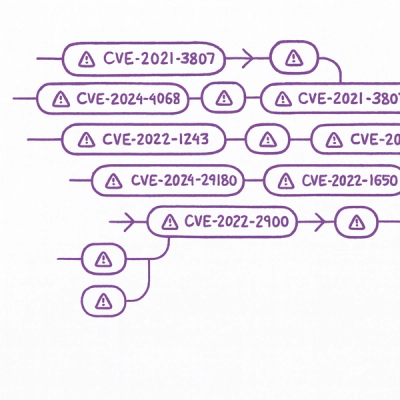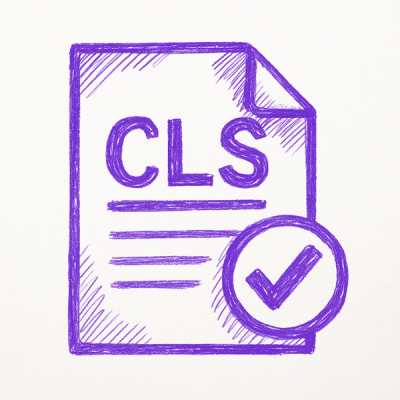
Security News
Astral Launches pyx: A Python-Native Package Registry
Astral unveils pyx, a Python-native package registry in beta, designed to speed installs, enhance security, and integrate deeply with uv.
Quantum Computing Qiskit Connector For Quantum Backend Use In Realtime
🖥️ Qiskit Connector® - Seamless Real-Time Connector for IBM Quantum Computing QPU
Qiskit Connector® is quantum computing open-source SDK extension. The Qiskit Connector® transforms how quantum developers connect to IBM Quantum backends by automating every step of the authentication, plan detection, and backend selection process. Instead of writing extensive boilerplate setup code for each project, developers can now seamlessly authenticate, dynamically detect whether they are using an Open or Paid plan, and instantly access the optimal backend QPUresource which is least-busy using a single intuitive keyword: backend. The connector intelligently manages quantum computing plan environment variables and Qiskit runtime service configuration for sticky reusability of QPU resources from the backend, allowing quantum developers to streamline connection workflows and immediately focus on building, testing, and scaling quantum applications.
By eliminating manual configurations and connection complexities, Qiskit Connector empowers developers to reduce onboarding time, minimize human error, and accelerate quantum solution delivery. The tool is especially valuable for production-grade quantum development where agility, repeatability, and secure backend access are critical. Whether working in research environments, building enterprise-grade quantum solutions, or designing novel quantum algorithms, developers can now concentrate on high-value tasks without being slowed down by infrastructure setup challenges.
⚛️This package performs the following:
.env if you are local) or load it remotely(depending on detection) to configure your IBM Quantum account plan and make the backend object available within your quantum application code for reuse in real-time.qiskit_smart) to establish connectivity, then to verify QPU resources using (qpu_verify), and retrieve a ready-to-use backend using (connector()). Presents you with the least-busy backend QPU to run your quantum application code in realtime.These functions are available after you import the module:
from qiskit_connector import QConnectorV2 as connector
from qiskit_connector import QPlanV2 as plan
connector()
Primary Integration Point: Seamlessly initializes your IBM Quantum account, selects the optimal QPU (or the first available device for open/paid plans), and emits a clear diagnostics summary. It returns a fully configured backend object that you can immediately pass to Qiskit’s sampler, estimator, transpiler, or any circuit execution API—so you can focus on your quantum workflows rather than connection boilerplate.
plan()
Subscription Plan Resolver: Automatically evaluates your environment configuration (via .env or system variables) to identify whether you’re operating under the Open Plan or a Paid Plan. This guarantees that your code consistently targets the correct IBM Quantum service tier, eliminating manual plan management and minimizing configuration drift.
| Version | Description | Updated Import Syntax |
|---|---|---|
| <= v2.2.2 | Initial import approach using functional-style interface for all versions equal or below v2.2.2 | from qiskit_connector import connector, plan_type |
| >= v2.2.3 | Switched to class-based architecture with aliasing for enhanced flexibility and clarity for all versions equal or above 2.2.3 | from qiskit_connector import QConnectorV2 as connectorfrom qiskit_connector import QPlanV2 as plan |
pip for installation - a common best practice.pip install qiskit-connector
This will also pull in functionalities powered by Qiskit SDK:
qiskit>=2.0.0and any other Qiskit dependencies. (Qiskit 1.x is not supported).
🔐 Security Practices: Do not check-in to version control any environment variable config file or any variable setup file. The best security practice is to add it to your .gitignore or to accessible vault. During local development, create a file named .env at your project root and ensure it is named on your .gitignore. The connector will automatically load it. Use the template below as the content of your .env file or variable setup config file. Copy and paste it then supply the values.
# General Purpose: (Required)
#--------------------------------------------------------------------------------------
IQP_API_TOKEN="<PROVIDE_YOUR_API_TOKEN>"
# Channels: (Required)
#--------------------------------------------------------------------------------------
OPEN_PLAN_CHANNEL="<PROVIDE_YOUR_CHANNEL>"
PAID_PLAN_CHANNEL="<PROVIDE PAID PLAN CHANNEL>"
# API Url: (Optional)
#--------------------------------------------------------------------------------------
IQP_API_URL=<PROVIDE_YOUR_API_URL>
IQP_RUNTIME_API_URL=<PROVIDE_YOUR_RUNTIME_API_URL>
# Quantum Url: (Optional)
#---------------------------------------------------------------------------------------
CLOUD_API_URL="<PROVIDE_YOUR_CLOUD_API_URL>"
QUANTUM_API_URL="<PROVIDE_YOUR_QUANTUM_API_URL>"
# Instance: (Required)
#---------------------------------------------------------------------------------------
OPEN_PLAN_INSTANCE="<PROVIDE_YOUR_OPEN_PLAN_INSTANCE>"
PAID_PLAN_INSTANCE="<PROVIDE_YOUR_PAID_PLAN_INSTANCE>"
# Default (Open plan) - free
#---------------------------------------------------------------------------------------
OPEN_PLAN_NAME="open"
# Optional (Upgrade) - Pay as you go
#----------------------------------------------------------------------------------------
PAYGO_PLAN_NAME="pay-as-you-go"
# Optional (Upgrade) - Flex
#----------------------------------------------------------------------------------------
FLEX_PLAN_NAME="flex"
# Optional (Upgrade) - Premium
#----------------------------------------------------------------------------------------
PREMIUM_PLAN_NAME="premium"
# Optional (Upgrade) - Dedicated
#----------------------------------------------------------------------------------------
DEDICATED_PLAN_NAME="dedicated"
# Switch "on" plan: (Required)
#----------------------------------------------------------------------------------------
OPEN_PLAN="on" # [Default & switched on] [Free]
PAYGO_PLAN="off"
FLEX_PLAN="off"
PREMIUM_PLAN="off"
DEDICATED_PLAN="off"
⚠️ Only one of the plans can be set to "on" at a time.
# After Qiskit Connector® pip install, Import Qiskit Connector®:
from qiskit_connector import QConnectorV2 as connector
from qiskit_connector import QPlanV2 as plan
# Initialize Qiskit Connector®::
current = plan()
backend = connector()
#-----------------------------------HOW TO USE QISKIT CONNECTOR--------------------------------
# ------------------------------ QISKIT 2.x CODE SAMPLE ---------------------------------------
# This code sample is using the Qiskit Connector to run with a real quantum backend.
###############################################################################################
# 🔍 This code sample demonstrates how to create a randomized circuit with depolarizing noise
# ✅ QuantumCircuit(2, 2) — matches 2-qubit base circuit
# ✅ Applies independent random Pauli gates per qubit before and after the base logic
# ✅ Uses remove_final_measurements() to cleanly insert logic into the composed circuit
# ✅ Re-applies measurements after twirling to preserve expected output
################################################################################################
from qiskit import QuantumCircuit, transpile
from qiskit_ibm_runtime import SamplerV2 as Sampler, Session
# Define entangled base circuit with superposition and CNOT entanglement
def base_circuit():
qc = QuantumCircuit(2, 2)
for q in range(2):
qc.h(q)
qc.rx(0.5, q)
qc.rz(1.0, q)
qc.s(q)
qc.t(q)
qc.h(q)
qc.cx(0, 1)
qc.measure([0, 1], [0, 1])
return qc
# Create randomized circuits with depolarizing noise model
def randomize_circuit(base_qc, p):
qc = QuantumCircuit(2, 2)
# Apply randomized Pauli gates before and after the base circuit
# ... [pauli gate application code here] ...
return qc
# Prepare circuits
rand_range = 5
p = 0.1
qc = base_circuit()
circuits = [randomize_circuit(qc, p) for _ in range(rand_range)]
# Transpile and submit jobs
qc_t = [transpile(c, backend=backend, optimization_level=3) for c in circuits[:rand_range]]
if current == "Open Plan":
sampler = Sampler(mode=backend)
job = sampler.run(qc_t, shots=1)
elif current == "Paid Plan":
with Session(backend=backend.name) as session:
sampler = Sampler(mode=session)
job = sampler.run(qc_t, shots=1)
# Monitor job and retrieve results, then display histograms
# ...
==================================================================================
____ ______ __
/ __ \ / ____/____ ____ ____ ___ _____ / /_ ____ _____
/ / / // / / __ \ / __ \ / __ \ / _ \ / ___// __// __ \ / ___/
/ /_/ // /___ / /_/ // / / // / / // __// /__ / /_ / /_/ // /
\___\_\____/ \____//_/ /_//_/ /_/ \___/ \___/ \__/ \____//_/
🧠 Qiskit Connector® for Quantum Backend Realtime Connection
⚛️ Connecting (Open Plan) to least-busy QPU...
----------------------------------------------------------------------------------
⚛️ Connected [Open Plan] → Realtime Least Busy QPU:: [ibm_sherbrooke]
- ibm_brisbane
- ibm_sherbrooke
- ibm_torino
🖥️ Least Busy QPU Now: [ibm_sherbrooke]
🖥️ Version: 2
🖥️ Qubits Count: 127
🖥️ Backend [ibm_sherbrooke] ready for use: ✔️ Yes
🖥️ Operational: Open Plan
==================================================================================
⚛️ Getting (Open Plan) Least-busy QPU Processor Info...
----------------------------------------------------------------------------------
--- 🔳 Processor Details for QConnector Least Busy Backend QPU: ibm_sherbrooke ---
🦾 Processor Type: Eagle
🦾 Processor Revision: r3
🦾 Processor status: 🟢 Online
🟢 Eagle Quantum Processor
==================================================================================
# ------------------------ your job result is below this line --------------------
# ...
Qiskit Connector software invention was inspired by IBM Research on Quantum Computing Qiskit Software, which led the authoring, design, development of Qiskit Connector based on the persistent research studies and tests carried out by Dr. Jeffrey Chijioke-Uche(IBM Quantum Ambassador & Research Scientist) in the lab. This software is expected to continue to metamorphose with the help and work of existing quantum computing academic scholarly & peer reviewed research at different levels in the Information Technology industry. If you use Qiskit for Quantum computing, please cite this software as per the provided BibTeX file. Also, citation is available in the following formats: Harvard, APA, MLA, IEEE, Chicago, & Vancouver
Dr. Jeffrey Chijioke-Uche
IBM Computer Scientist
IBM Quantum Ambassador & Research Scientist
IEEE Senior Member (Computational Intelligence)
The Quantum Computing Qiskit Connector is copyrighted and it is a proprietary software developed by Dr. Jeffrey Chijioke-Uche ©2025 - All Rights Reserved. The software is for enhancing development, usability, and workflows in IBM Quantum Computing systems by global users. This software is protected under copyright laws and applicable intellectual property statutes. Unauthorized reproduction, distribution, or derivative use of the software in part or whole is strictly prohibited without express written permission from the author. This software may be used under the terms outlined in the accompanying licenses by (Apache 2.0 and Creative Commons Attribution 4.0 international). Use of this software signifies your agreement to comply with the license terms and to attribute the original author when incorporating the package into your work or systems. For other question(s), please contact the maintainer directly through the official project repository or email channel provided on PyPI. All Rights Reserved.
The development of the Qiskit Connector has been made possible through the support, inspiration, and technical contributions of several leading institutions and communities. The software author would like to express deep gratitude to IBM Research & IBM Quantum Ambassadors Group for the pioneering efforts in quantum computing and providing the infrastructure and ecosystem that fostered the development of this software. Their continued support has significantly accelerated progress in real-world quantum computing and quantum application development for cutting edge technology advancement.
Additional appreciation is extended to the IEEE Computational Intelligence Society for their thought leadership in intelligent systems, and to the Harvard Program for Research in Science and Engineering for its role in shaping early research directions. The author also acknowledges Walden University Research for providing a strong academic and methodological foundation throughout the software development lifecycle. These institutions have collectively influenced the innovation and rigor reflected in this project.
This software uses these licenses for distribution:
FAQs
Quantum Computing Qiskit Connector For Quantum Backend Use In Realtime
We found that qiskit-connector demonstrated a healthy version release cadence and project activity because the last version was released less than a year ago. It has 0 open source maintainers collaborating on the project.
Did you know?

Socket for GitHub automatically highlights issues in each pull request and monitors the health of all your open source dependencies. Discover the contents of your packages and block harmful activity before you install or update your dependencies.

Security News
Astral unveils pyx, a Python-native package registry in beta, designed to speed installs, enhance security, and integrate deeply with uv.

Security News
The Latio podcast explores how static and runtime reachability help teams prioritize exploitable vulnerabilities and streamline AppSec workflows.

Security News
The latest Opengrep releases add Apex scanning, precision rule tuning, and performance gains for open source static code analysis.